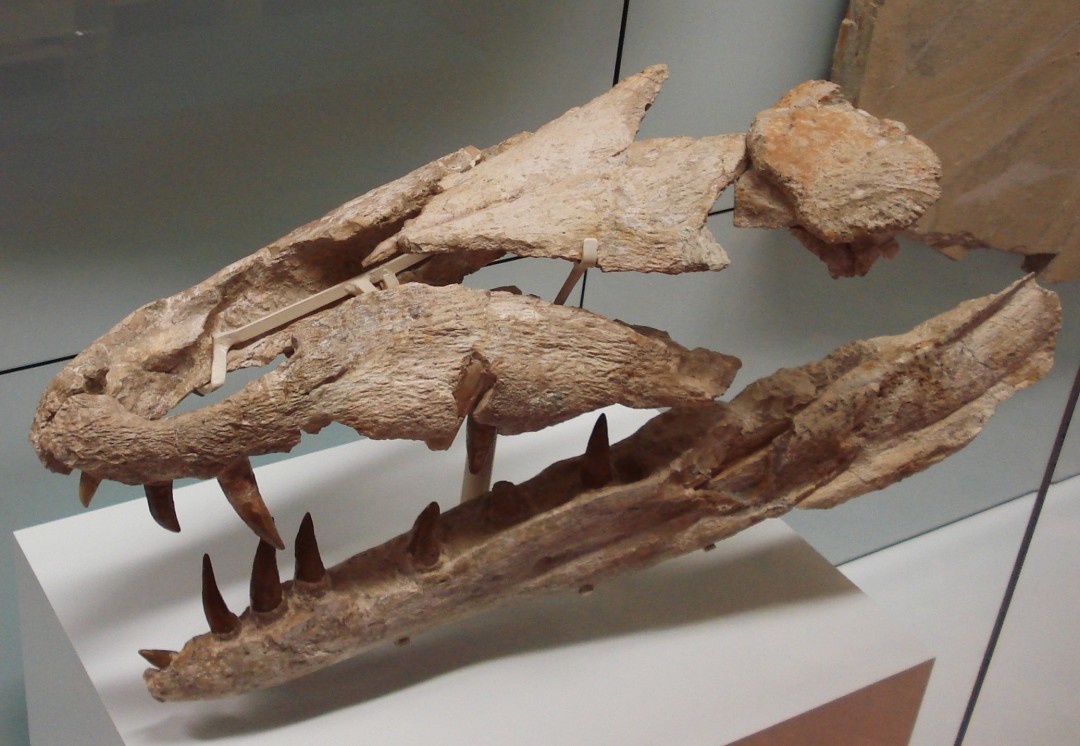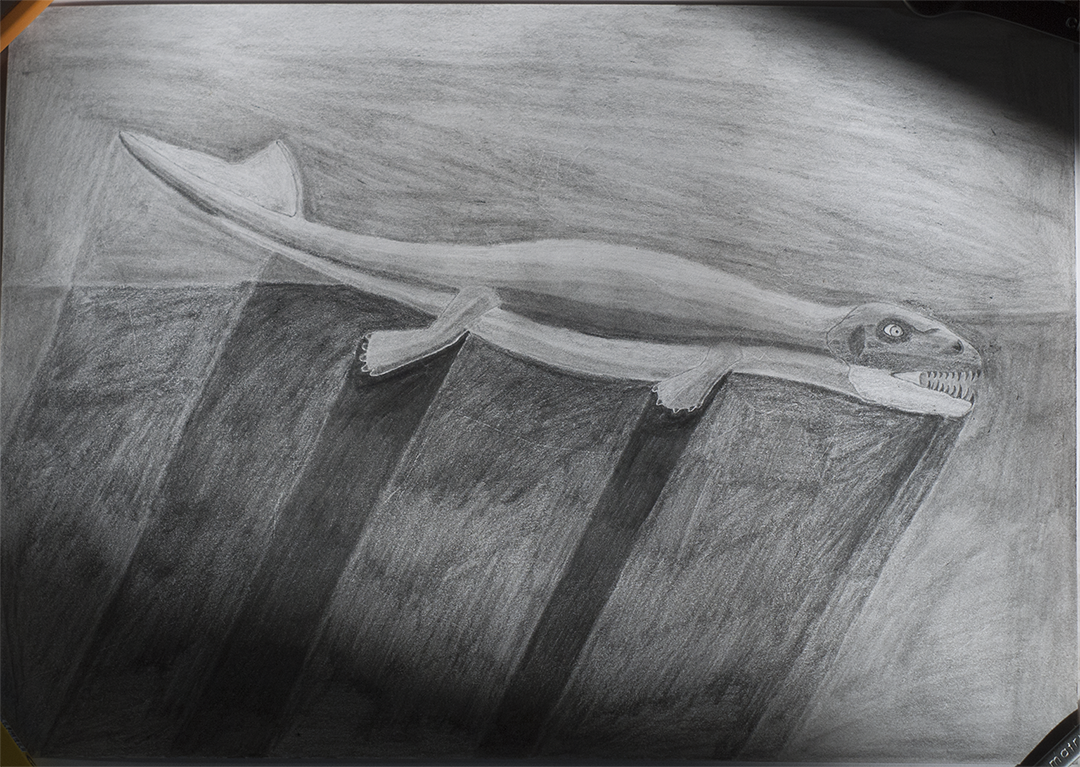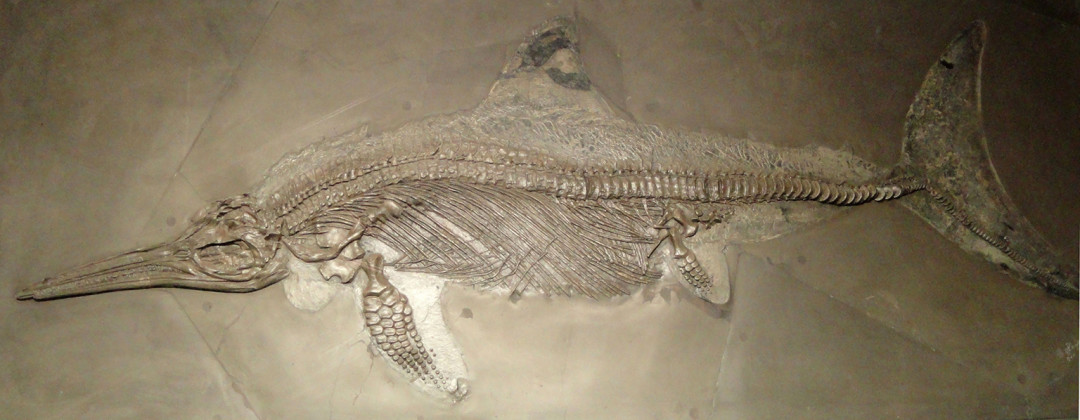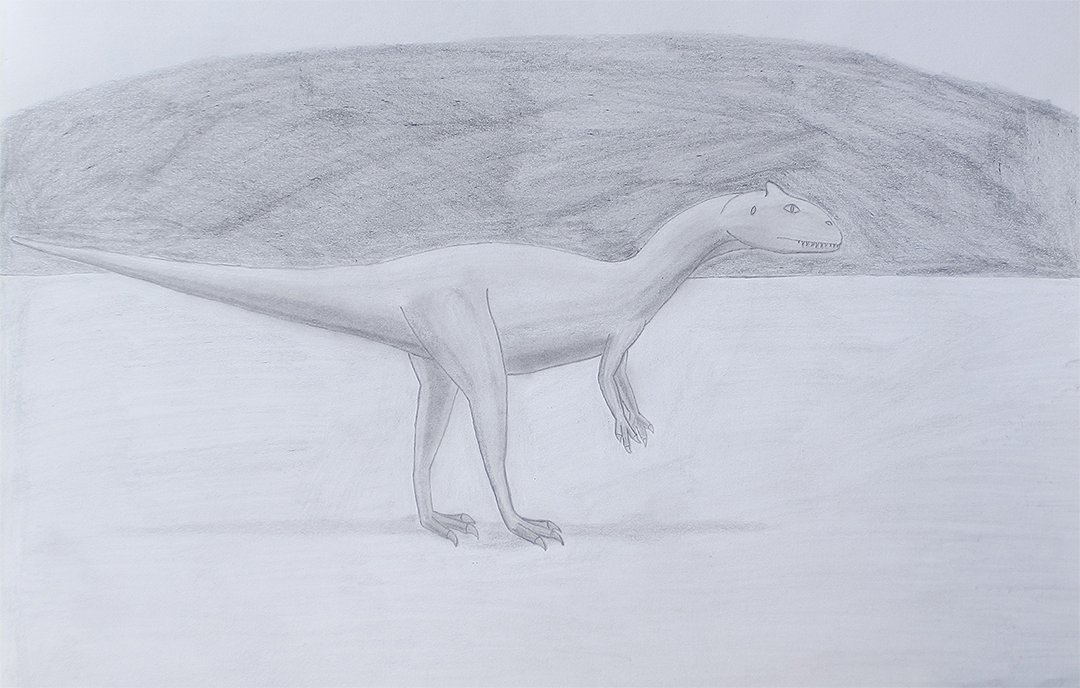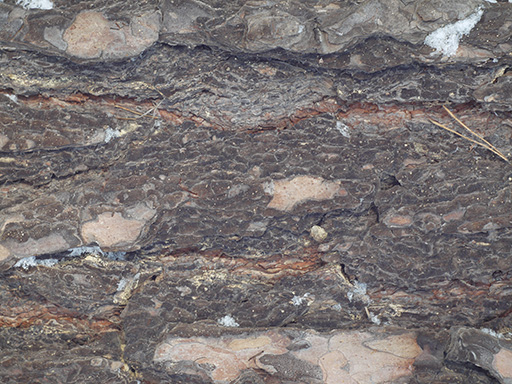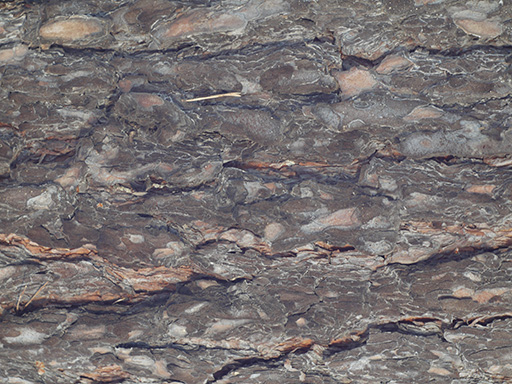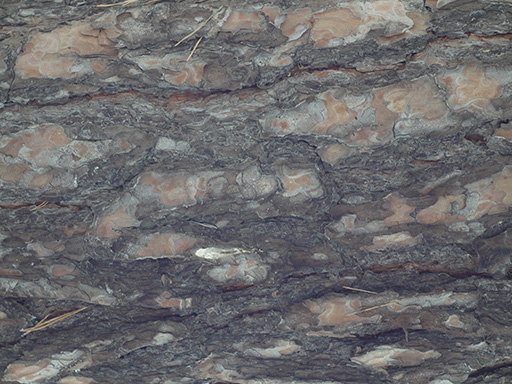| Eon | Era | Period |
|---|
| Phanerozoic | Cenozoic | |
| Mesozoic | |
| Paleozoic | |
| Proterozoic | Neo-proterozoic | |
| Meso-proterozoic | |
| Paleo-proterozoic | |
| Archean | Neoarchean 2800 |
| Mesoarchean 3200 |
| Paleoarchean 3600 |
| Eoarchean 4000 |
| Hadean | Early Imbrian 4100 |
| Nectarian 4300 |
| Basin Groups 4500 |
| Cryptic 4567 |
This is geochronological time scale. Click on eon, era or period name to see its description and associated drawings.
Phanerozoic Eon
The Phanerozoic is the current geologic eon in the geologic timescale. It covers 541.0 ± 1.0 million years and goes back to the period when diverse hard-shelled animals first appeared. Its name derives from the Ancient Greek words φανερός ( fanerós ) and ζωή ( zo̱í̱ ), meaning visible life, since it was once believed that life began in the Cambrian, the first period of this eon.
The time span of the Phanerozoic includes the rapid emergence of a number of animal phyla; the evolution of these phyla into diverse forms; the emergence and development of complex plants; the evolution of fish; the emergence of insects and tetrapods; and the development of modern faunas. During this time span tectonic forces caused the continents to move and eventually collect into a single landmass known as Pangaea, which then separated into the current continental landmasses.
Proterozoic Eon
The Proterozoic is a geological eon representing the time just before the proliferation of complex life on Earth. The name Proterozoic comes from Greek and means “earlier life”. Evidence for the first known glaciations occurred during the Proterozoic; one began shortly after the beginning of the eon, while there were at least four during the Neoproterozoic, possibly climaxing with the hypothesized Snowball Earth of the Sturtian and Marinoan glaciations. One of the most important events of the Proterozoic was the accumulation of oxygen in the Earth’s atmosphere. Though oxygen is believed to have been released by photosynthesis as far back as Archean times, it could not build up to any significant degree until chemical sinks—unoxidized sulfur and iron—had been filled; until roughly 2.3 billion years ago, oxygen was probably only 1% to 2% of its current level.
It is known that tectonic processes in the Proterozoic resemble greatly what we see today. This is due to closely resembling features in the rock record. In the late Proterozoic, the dominant supercontinent was Rodinia ( ~1000 – ~750 Ma ). It consisted of a series of continents all attached to a central craton called Laurentia. Rodinia formed after the breakup of Columbia and prior to the assemblage of the supercontinent Gondwana ( ~500 Ma ). Columbia was dominant in the early-mid Proterozoic and not much is known about continental assemblages before then.
The first advanced single-celled, eukaryotes and multi-cellular life roughly coincides with the start of the accumulation of free oxygen. It was also during the Proterozoic that the first symbiotic relationships between mitochondria ( for nearly all eukaryotes ) and chloroplasts ( for plants and some protists only ) and their hosts evolved.
Archean Eon
The Archean Eon ( also spelled Archaean; formerly Archaeozoic, also spelled Archeozoic or Archæozoic ) is a geologic eon before the Proterozoic Eon. The name comes from the ancient Greek Αρχή ( Arkhē ), meaning “beginning, origin”. The Archean is one of the four principal eons of Earth history. When the Archean began, the Earth’s heat flow was nearly three times as high as it is today, and it was still twice the current level at the transition from the Archean to the Proterozoic ( 2,500 Ma ). The extra heat was the result of a mix of remnant heat from planetary accretion, heat from the formation of the Earth’s core, and heat produced by radioactive elements.
The Archean atmosphere is thought to have nearly lacked free oxygen. Astronomers think that the sun had about 70–75 percent of the present luminosity, yet temperatures appear to have been near modern levels even within 500 Ma of Earth’s formation, which is puzzling ( the faint young Sun paradox ). The presence of liquid water is evidenced by certain highly deformed gneisses produced by metamorphism of sedimentary protoliths. The equable temperatures may reflect the presence of larger amounts of greenhouse gases than later in the Earth’s history. Alternatively, Earth’s albedo may have been lower at the time, due to less land area and cloud cover. By the end of the Archaean c. 2500 Ma ( million years ago ), plate tectonic activity may have been similar to that of the modern Earth. Liquid water was prevalent, and deep oceanic basins are known to have existed by the presence of banded iron formations, chert beds, chemical sediments and pillow basalts. Although the first continents formed during this eon, rock of this age makes up only 7% of the world’s current cratons; even allowing for erosion and destruction of past formations, evidence suggests that continental crust equivalent to only 5-40% of the present amount formed during the Archean.
Scientific evidence suggests that life began on Earth at least 3.5 billion years ago. The earliest evidences for life on Earth are graphite found to be biogenic in 3.7 billion-year-old metasedimentary rocks discovered in Western Greenland and microbial mat fossils found in 3.48 billion-year-old sandstone discovered in Western Australia. Fossils of cyanobacterial mats ( stromatolites, which were instrumental in creating the free oxygen in the atmosphere ) are found throughout the Archean, becoming especially common late in the eon, while a few probable bacterial fossils are known from chert beds. In addition to the domain Bacteria ( once known as Eubacteria ), microfossils of the domain Archaea have also been identified. Life was probably present throughout the Archean, but may have been limited to simple non-nucleated single-celled organisms, called Prokaryota ( formerly known as Monera ). There are no known eukaryotic fossils, though they might have evolved during the Archean without leaving any fossils. No fossil evidence has been discovered for ultramicroscopic intracellular replicators such as viruses.
Hadean Eon
The Hadean is the first geologic eon of Earth and lies before the Archean. It began with the formation of the Earth about 4.6 billion years ago and ended 4,000 million years ago. The name “Hadean” comes from Hades, the ancient Greek god of the underworld, in reference to the hellish conditions on Earth at the time : the planet had just formed and was still very hot due to high volcanism, a partially molten surface and frequent collisions with other Solar System bodies.
In the last decades of the 20th century geologists identified a few Hadean rocks from Western Greenland, Northwestern Canada, and Western Australia. The oldest dated zircon crystals date are 4.404 ± 0.008 Ga enclosed in a metamorphosed sandstone conglomerate in the Jack Hills of the Narryer Gneiss Terrane of Western Australia. The 4.404 ± 0.008 Ga zircon is a slight outlier, with the oldest consistently-dated zircon falling closer to 4.35 Ga—around 200 million years after the hypothesized time of the Earth’s formation. A sizeable quantity of water would have been in the material that formed the Earth. Part of the ancient planet is theorized to have been disrupted by the impact that created the Moon, which should have caused melting of one or two large areas. The rock vapor would have condensed within two thousand years, leaving behind hot volatiles which probably resulted in a heavy CO2 atmosphere with hydrogen and water vapor. Liquid water oceans existed despite the surface temperature of 230 °C ( 446 °F ) because of the atmospheric pressure of the heavy CO2 atmosphere. As cooling continued, subduction and dissolving in ocean water removed most CO2 from the atmosphere but levels oscillated wildly as new surface and mantle cycles appeared. Study of zircons has found that liquid water must have existed as long ago as 4,400 million years ago, very soon after the formation of the Earth. This requires the presence of an atmosphere. The time when Earth finished its transition from having a hot, molten surface and atmosphere full of carbon dioxide, to being very much like it is today, can be roughly dated to about 4.0 billion years ago. The actions of plate tectonics and the oceans trap vast amounts of carbon dioxide, thereby eliminating the greenhouse effect and leading to a much cooler surface temperature and the formation of solid rock, and possibly even life.
Cenozoic Era
The Cenozoic Era ( also Cænozoic, Caenozoic or Cainozoic; meaning “new life”, from Greek καινός kainos “new”, and ζωή zoe “life” ) is the current and most recent of the three Phanerozoic geological eras, covering the period from 65 million years ago to present day. The Cenozoic is also known as the Age of Mammals, because the extinction of many groups allowed mammals to greatly diversify.
Early in the Cenozoic, following the K-Pg event, the planet was dominated by relatively small fauna, including small mammals, birds, reptiles, and amphibians. From a geological perspective, it did not take long for mammals and birds to greatly diversify in the absence of the large reptiles that had dominated during the Mesozoic. Some flightless birds grew larger than the average human. These species are sometimes referred to as “terror birds,” and were formidable predators. Mammals came to occupy almost every available niche ( both marine and terrestrial ), and some also grew very large, attaining sizes not seen in most of today’s terrestrial mammals. Climate-wise, the Earth had begun a drying and cooling trend, culminating in the glaciations of the Pleistocene Epoch, and partially offset by the Paleocene-Eocene Thermal Maximum. The continents also began looking roughly familiar at this time and moved into their current positions.
Geologically, the Cenozoic is the era when the continents moved into their current positions. Australia-New Guinea, having split from Pangea during the early Cretaceous, drifted north and, eventually, collided with South-east Asia; Antarctica moved into its current position over the South Pole; the Atlantic Ocean widened and, later in the era, South America became attached to North America with the isthmus of Panama. India collided with Asia 55 to 45 million years ago creating the Himalayas; Arabia collided with Eurasia, closing the Tethys ocean and creating the Zagros Mountains, around 35 million years ago. The Paleocene–Eocene Thermal Maximum of 55.8 million years ago was a significant global warming event; however, since the Azolla event of 49 million years ago, the Cenozoic Era has been a period of long-term cooling. After the tectonic creation of Drake Passage, when South America fully detached from Antarctica during the Oligocene, the climate cooled significantly due to the advent of the Antarctic Circumpolar Current which brought cool deep Antarctic water to the surface. The cooling trend continued in the Miocene, with relatively short warmer periods. When South America became attached to North America creating the Isthmus of Panama, the Arctic region cooled due to the strengthening of the Humboldt and Gulf Stream currents, eventually leading to the glaciations of the Quaternary ice age, the current interglacial of which is the Holocene Epoch.
During the Cenozoic, mammals proliferated from a few small, simple, generalized forms into a diverse collection of terrestrial, marine, and flying animals, giving this period its other name, the Age of Mammals, despite the fact that birds still outnumbered mammals two to one. The Cenozoic is just as much the age of savannas, the age of co-dependent flowering plants and insects, and the age of birds. Grass also played a very important role in this era, shaping the evolution of the birds and mammals that fed on it. One group that diversified significantly in the Cenozoic as well were the snakes. Evolving in the Cenozoic, the variety of snakes increased tremendously, resulting in many colubrids, following the evolution of their current primary prey source, the rodents. In the earlier part of the Cenozoic, the world was dominated by the gastornid birds, terrestrial crocodiles like Pristichampsus, and a handful of primitive large mammal groups like uintatheres, mesonychids, and pantodonts. But as the forests began to recede and the climate began to cool, other mammals took over. The Cenozoic is full of mammals both strange and familiar, including chalicotheres, creodonts, whales, primates, entelodonts, saber-toothed cats, mastodons and mammoths, three-toed horses, giant rhinoceros like Indricotherium, the rhinoceros-like brontotheres, various bizarre groups of mammals from South America, such as the vaguely elephant-like pyrotheres and the dog-like marsupial relatives called borhyaenids and the monotremes and marsupials of Australia.
Mesozoic Era
The Mesozoic Era /mɛzɵˈzoʊɪk/ is an interval of geological time from about 252 to 66 million years ago. It is also called the age of reptiles, a phrase introduced by the 19th century paleontologist Gideon Mantell who viewed it as dominated by reptiles such as Iguanodon, Megalosaurus, Plesiosaurus and what are now called Pseudosuchia. Mesozoic means “middle life”, deriving from the Greek prefix meso-/μεσο- for “between” and zōon/ζῷον meaning “animal” or “living being”. The era began in the wake of the Permian–Triassic extinction event, the largest well-documented mass extinction in Earth’s history, and ended with the Cretaceous–Paleogene extinction event, another mass extinction which is known for having killed off non-avian dinosaurs, as well as other plant and animal species. The Mesozoic was a time of significant tectonic, climate and evolutionary activity. The era witnessed the gradual rifting of the supercontinent Pangaea into separate landmasses that would eventually move into their current positions. The climate of the Mesozoic was varied, alternating between warming and cooling periods. Overall, however, the Earth was hotter than it is today. Non-avian dinosaurs appeared in the Late Triassic and became the dominant terrestrial vertebrates early in the Jurassic, occupying this position for about 135 million years until their demise at the end of the Cretaceous. Birds first appeared in the Jurassic, having evolved from a branch of theropod dinosaurs. The first mammals also appeared during the Mesozoic, but would remain small—less than 15 kg ( 33 lb )—until the Cenozoic.
Compared to the vigorous convergent plate mountain-building of the late Paleozoic, Mesozoic tectonic deformation was comparatively mild. By the end of the era, the continents had rifted into nearly their present form. Laurasia became North America and Eurasia, while Gondwana split into South America, Africa, Australia, Antarctica and the Indian subcontinent, which collided with the Asian plate during the Cenozoic, the impact giving rise to the Himalayas.
The dominant land plant species of the time were gymnosperms, which are vascular, cone-bearing, non-flowering plants such as conifers that produce seeds without a coating. This is opposed to the earth’s current flora, in which the dominant land plants in terms of number of species are angiosperms. One particular plant genus, Ginkgo, is thought to have evolved at this time and is represented today by a single species, Ginkgo biloba. As well, the extant genus Sequoia is believed to have evolved in the Mesozoic. The extinction of nearly all animal species at the end of the Permian Period allowed for the radiation of many new lifeforms. In particular, the extinction of the large herbivorous pareiasaurs and carnivorous gorgonopsians left those ecological niches empty. Some were filled by the surviving cynodonts and dicynodonts, the latter of which subsequently became extinct. Some plant species had distributions that were markedly different from succeeding periods; for example, the Schizeales, a fern order, were skewed to the Northern Hemisphere in the Mesozoic, but are now better represented in the Southern Hemisphere. Recent research indicates that the specialized animals that formed complex ecosystems, with high biodiversity, complex food webs and a variety of niches, took much longer to reestablish, recovery did not begin until the start of the mid-Triassic, 4M to 6M years after the extinction and was not complete until 30M years after the Permian–Triassic extinction event. Animal life was then dominated by various archosaurian reptiles: dinosaurs, pterosaurs, and aquatic reptiles such as ichthyosaurs, plesiosaurs, and mosasaurs. The climatic changes of the late Jurassic and Cretaceous provided for further adaptive radiation. The Jurassic was the height of archosaur diversity, and the first birds and eutherian mammals also appeared. Angiosperms radiated sometime in the early Cretaceous, first in the tropics, but the even temperature gradient allowed them to spread toward the poles throughout the period. By the end of the Cretaceous, angiosperms dominated tree floras in many areas, although some evidence suggests that biomass was still dominated by cycad and ferns until after the Cretaceous–Paleogene extinction.
Some have argued that insects diversified with angiosperms because insect anatomy, especially the mouth parts, seems particularly well-suited for flowering plants. However, all major insect mouth parts preceded angiosperms and insect diversification actually slowed when they arrived, so their anatomy originally must have been suited for some other purpose. As the temperatures in the seas increased, the larger animals of the early Mesozoic gradually began to disappear while smaller animals of all kinds, including lizards, snakes, and perhaps primates, evolved. The Cretaceous–Paleogene extinction event exacerbated this trend. The large archosaurs became extinct, while birds and mammals thrived, as they do today.
Paleozoic Era
The Paleozoic ( or Palaeozoic ) Era from the Greek palaios ( παλαιός ), “old” and zoe ( ζωή ), “life”, meaning “ancient life” is the earliest of three geologic eras of the Phanerozoic Eon, spanning from roughly 541 to 252.17 million years ago. It is the longest of the Phanerozoic eras. The Paleozoic was a time of dramatic geological, climatic, and evolutionary change. The Cambrian Period witnessed the most rapid and widespread diversification of life in Earth’s history, known as the Cambrian explosion, in which most modern phyla first appeared. Fish, arthropods, amphibians and reptiles all evolved during the Paleozoic. Life began in the ocean but eventually transitioned onto land, and by the late Paleozoic, it was dominated by various forms of organisms. Great forests of primitive plants covered the continents, many of which formed the coal beds of Europe and eastern North America. Towards the end of the era, large, sophisticated reptiles were dominant and the first modern plants ( conifers ) appeared. The Paleozoic Era ended with the largest mass extinction in Earth’s history, the Permian–Triassic extinction event. The effects of this catastrophe were so devastating that it took life on land 30 million years into the Mesozoic to recover. Recovery of life in the sea may have been much faster.
Geologically, the Paleozoic starts shortly after the breakup of a supercontinent called Pannotia. Throughout the early Paleozoic, the Earth’s landmass was broken up into a substantial number of continents. Towards the end of the era, the continents gathered together into a supercontinent called Pangaea, which included most of the Earth’s land area. During the early Paleozoic, the huge continent Gondwanaland had either formed or was forming. By mid-Paleozoic, the collision of North America and Europe produced the Acadian-Caledonian uplifts, and a subduction plate uplifted eastern Australia. By the late Paleozoic, continental collisions formed the supercontinent Pangaea and resulted in some of the great mountain chains, including the Appalachians, Urals, and mountains of Tasmania.
The Ordovician and Silurian periods were warm greenhouse periods, with the highest sea levels of the Paleozoic ( 200 m above today’s ); the warm climate was interrupted only by a 30 million years cool period, the Early Palaeozoic Icehouse, culminating in the Hirnantian glaciation. The early Cambrian climate was probably moderate at first, becoming warmer over the course of the Cambrian, as the second-greatest sustained sea level rise in the Phanerozoic got underway. However, as if to offset this trend, Gondwana moved south with considerable speed, so that, in Ordovician time, most of West Gondwana (Africa and South America) lay directly over the South Pole. The early Paleozoic climate was also strongly zonal, with the result that the “climate”, in an abstract sense became warmer, but the living space of most organisms of the time—the continental shelf marine environment—became steadily colder. However, Baltica ( Northern Europe and Russia ) and Laurentia ( eastern North America and Greenland ) remained in the tropical zone, while China and Australia lay in waters which were at least temperate. The Early Paleozoic ended, rather abruptly, with the short, but apparently severe, late Ordovician ice age. This cold spell caused the second-greatest mass extinction of Phanerozoic time. Over time, the warmer weather moved into the Paleozoic Era. The middle Paleozoic was a time of considerable stability. Sea levels had dropped coincident with the ice age, but slowly recovered over the course of the Silurian and Devonian. The slow merger of Baltica and Laurentia, and the northward movement of bits and pieces of Gondwana created numerous new regions of relatively warm, shallow sea floor. As plants took hold on the continental margins, oxygen levels increased and carbon dioxide dropped, although much less dramatically. The north–south temperature gradient also seems to have moderated, or metazoan life simply became hardier, or both. At any event, the far southern continental margins of Antarctica and West Gondwana became increasingly less barren. The Devonian ended with a series of turnover pulses which killed off much of Middle Paleozoic vertebrate life, without noticeably reducing species diversity overall. The late Paleozoic was a time which has left us a good many unanswered questions. The Mississippian began with a spike in atmospheric oxygen, while carbon dioxide plummeted to unheard-of lows. This destabilized the climate and led to one, and perhaps two, ice ages during the Carboniferous. These were far more severe than the brief Late Ordovician Ice; but, this time, the effects on world biota were inconsequential. By the Cisuralian, both oxygen and carbon dioxide had recovered to more normal levels. On the other hand, the assembly of Pangaea created huge arid inland areas subject to temperature extremes. The Lopingian is associated with falling sea levels, increased carbon dioxide and general climatic deterioration, culminating in the devastation of the Permian extinction.
While macroscopic plant life appeared early in the Paleozoic and possibly late in the Neoproterozoic, it mostly remained aquatic until sometime in the Silurian and Devonian, when it began to transition onto dry land. Terrestrial flora reached its climax in the Carboniferous, when towering lycopsid rainforests dominated the tropical belt of Euramerica. Climate change caused the Carboniferous Rainforest Collapse which fragmented this habitat, diminishing the diversity of plant life in the late Carboniferous and Permian. A noteworthy feature of Paleozoic life is the sudden appearance of nearly all of the invertebrate animal phyla in great abundance at the beginning of the Cambrian. The first vertebrates appeared in the form of primitive fish, which greatly diversified in the Silurian and Devonian. The first animals to venture onto dry land were the arthropods. Some fish had lungs, and powerful bony fins that also could crawl onto land. The bones in their fins eventually evolved into legs and they became the first tetrapods. Amphibians were the dominant tetrapods until the mid-Carboniferous, when climate change greatly reduced their diversity. Later, reptiles prospered and continued to increase in number and variety by the late Permian.
Neo-proterozoic Era
The Neoproterozoic Era is the unit of geologic time from 1,000 to 541 million years ago. It is the last Era of the Proterozoic Eon and Precambrian Supereon. The most severe glaciation known in the geologic record occurred during the Cryogenian, when ice sheets reached the equator and formed a possible “Snowball Earth”. The earliest fossils of multicellular life are found in the Ediacaran, including the earliest animals.
At the onset of the Neoproterozoic the supercontinent Rodinia, which had assembled during the late Mesoproterozoic, straddled the equator. During the Tonian, rifting commenced which broke Rodinia into a number of individual land masses. Possibly as a consequence of the low-latitude position of most continents, several large-scale glacial events occurred during the Neoproterozoic Era including the Sturtian and Marinoan glaciations of the Cryogenian. These glaciations are believed to have been so severe that there were ice sheets at the equator—a state known as the “Snowball Earth”.
In the early 20th century, paleontologists started finding fossils of multicellular animals that predated the Cambrian boundary. A few of the early animals appear possibly to be ancestors of modern animals. Most fall into ambiguous groups of frond-like organisms; discoids that might be holdfasts for stalked organisms ( “medusoids” ); mattress-like forms; small calcareous tubes; and armored animals of unknown provenance. These were most commonly known as Vendian biota until the formal naming of the Period, and are currently known as Ediacaran biota. Most were soft bodied. The relationships, if any, to modern forms are obscure. Some paleontologists relate many or most of these forms to modern animals. Others acknowledge a few possible or even likely relationships but feel that most of the Ediacaran forms are representatives of unknown animal types. In addition to Ediacaran biota, later two other types of biota were discovered in China ( the so-called Doushantuo formation and Hainan formation ).
Meso-proterozoic Era
The Mesoproterozoic Era is a geologic era that occurred from 1,600 to 1,000 million years ago. The Mesoproterozoic was the first period of Earth’s history of which a respectable geological record survives. Continents existed in the Paleoproterozoic, but we know little about them. It is noteworthy that the continental masses of the Mesoproterozoic are more or less the same ones that are with us today. The major events of this era are the breakup of the Columbia supercontinent, the formation of the Rodinia supercontinent, and the evolution of sexual reproduction.
This era is marked by the further development of continental plates and plate tectonics. The first large-scale mountain building episode, the Grenville Orogeny, for which extensive evidence still survives, happened in this period. This era was the high point of the Stromatolites before they declined in the Neoproterozoic. The era saw the development of sexual reproduction, which greatly increased the complexity of life to come. It was the start of development of communal living among organisms, the multicellular organisms. It was an Era of apparently critical, but still poorly understood, changes in the chemistry of the sea, the sediments of the earth, and the composition of the air. Oxygen levels had risen to perhaps 1% of today’s levels at the beginning of the era and continued rising throughout the Era.
Paleo-proterozoic Era
The Paleoproterozoic ( also Palaeoproterozoic ) is the first of the three eras of the Proterozoic occurring between 2,500 to 1,600 million years ago. This is when the continents first stabilized. Paleontological evidence on the Earth’s rotational history suggests that ~1.8 billion years ago, there were about 450 days in a year, implying 20 hour days.
Before the significant increase in atmospheric oxygen almost all life that existed was anaerobic, that is, the metabolism of life depended on a form of cellular respiration that did not require oxygen. Free oxygen in large amounts is toxic to most anaerobic bacteria. It is widely believed that the majority of existent anaerobic life on Earth died off. The only life that remained was either resistant to the oxidizing and poisonous effects of oxygen, or spent its life-cycle in an oxygen-free environment. This main event is called the oxygen catastrophe. The crown eukaryotes, from which all modern day eukaryotic lineages have arisen have been dated to the paleoproterozoic era. By ~1 Gy the latest common ancestors between the ciliate and flagellate lineages probably diverged. The Francevillian Group and Grypania fossils and the first eukaryotes also appeared during this time. During this era the earliest global-scale continent-continent collisional belts developed. They are interpreted as having resulted from 2.0-1.8 Ga global-scale collisional events that led to the assembly of a Paleo-Mesoproterozoic supercontinent named “Columbia” or “Nuna”.
